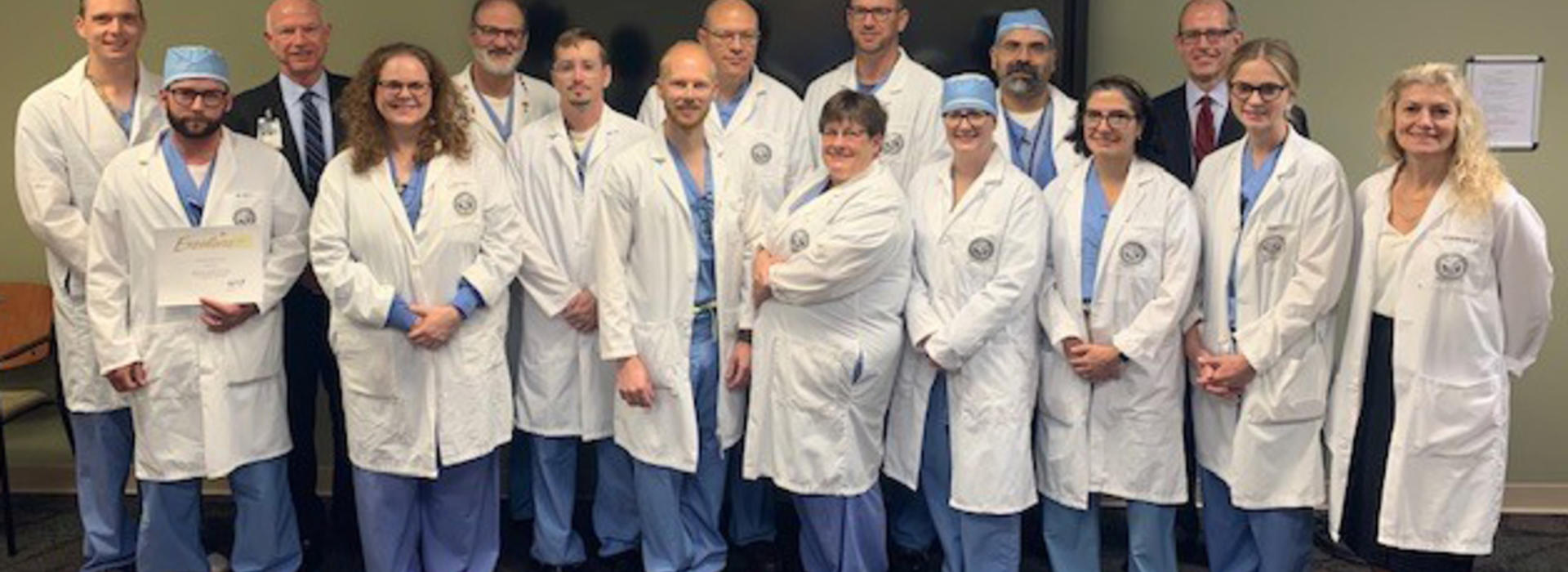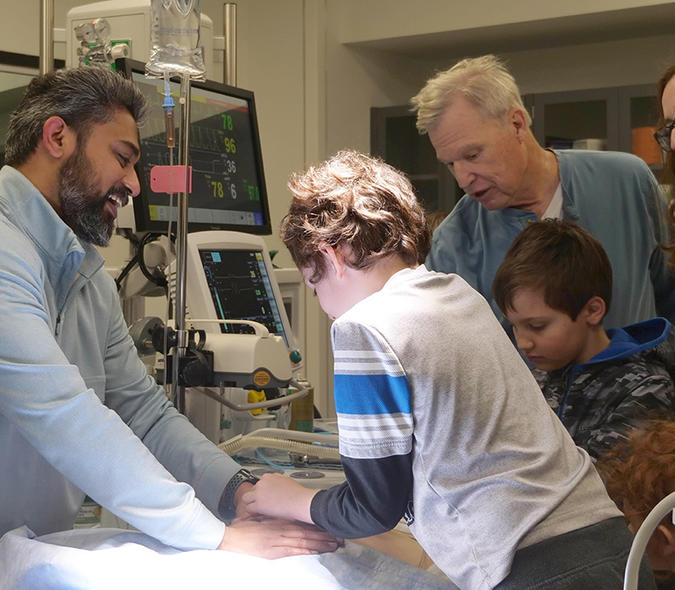
Minneapolis Veteran’s Affairs Anesthesiology Department’s Acute Regional Pain Service Excels in Eliminating Pain
Since May of 2018, with vital training and input from University of Minnesota Medical School Department of Anesthesiology Associate Professor Jacob Hutchins, MD, the Minneapolis Veteran’s Affairs Anesthesiology Department’s Acute Regional Pain Service has performed more than 2,400 peripheral nerve blocks—which have resulted in providing more effective pain control for Veterans after surgery. These nerve blocks have been so powerful that they have allowed providers to reduce, and even eliminate in some cases, the need to prescribe opioids or other narcotic pain medications to patients during and after their surgery.
“In the last 12 months, we have tripled the number of nerve blocks we perform. Our results have shown that this has reduced postoperative pain and narcotic usage,” said Dustin Palm, MD, Clinical Director of the VA’s Acute Regional Pain Service.
For this progress they have made in implementing and developing the service at the Minneapolis VA Hospital, the VA’s Acute Regional Pain Service team was awarded second place in the “Star” award from the Veterans Integrated Service Network 23 (VISN 23).
Accompanying their success with the Star award, they were semi-finalists in the national Veterans Health Association Shark Tank Competition. This competition recognizes field-developed practices that promote positive outcomes and improve experiences for Veterans, while also helping constantly improve and standardize those practices across the health care system.
“This was only possible thanks to the tireless dedication of the entire perioperative staff,” said Dr. Palm. “Particular credit is due to those that started the service, Dr. Hutchins, Garrett Peterson, CRNA, and Jeremy Anderson, CRNA.”
Future Work to Reduce Narcotic Usage
In August, the team received approval to trial liposomal bupivacaine for interscalene nerve blocks for total shoulder arthroplasty. “This is a long-acting form of bupivacaine and extends the duration of pain relief to ~72 hours. We are tracking these patients and collecting pain scores and narcotic usage to show the comparable benefit to interscalene catheters, at a fraction of the cost of catheters,” said Dr. Palm.
“We are continuing to expand the service. For example, we are now placing erector spinae catheters for all video-assisted thoracoscopic lung surgeries. This will optimize pain control and minimize respiratory complications,” said Dr. Palm. “We are instituting a pathway for all hip fractures, a component of which is early fascia iliaca catheters to minimize pain and delirium in this high-risk group. We are also offering nerve blocks to non-operative patients who may benefit from regional anesthesia such as rib fractures, as well as patients with acute pain who use chronic opiates and or opiate antagonists such as naltrexone.”
The VA’s Acute Regional Pain Service has other projects in place to study and review pain management strategies, and plan to work to make continuous improvements for veterans and patients with chronic pain.



